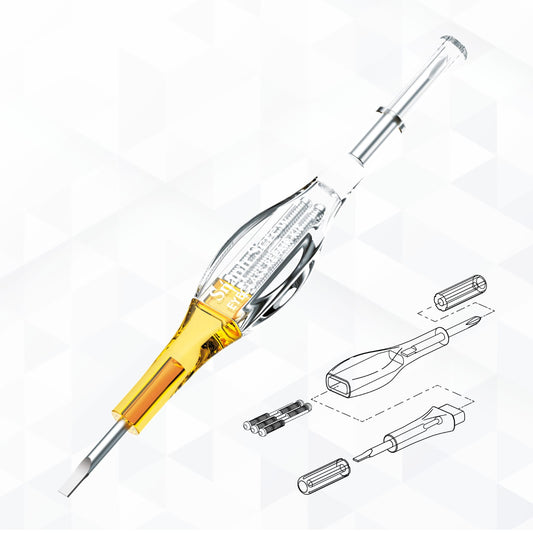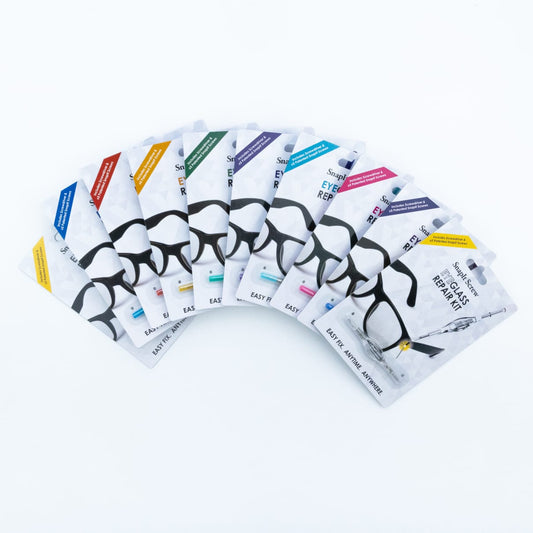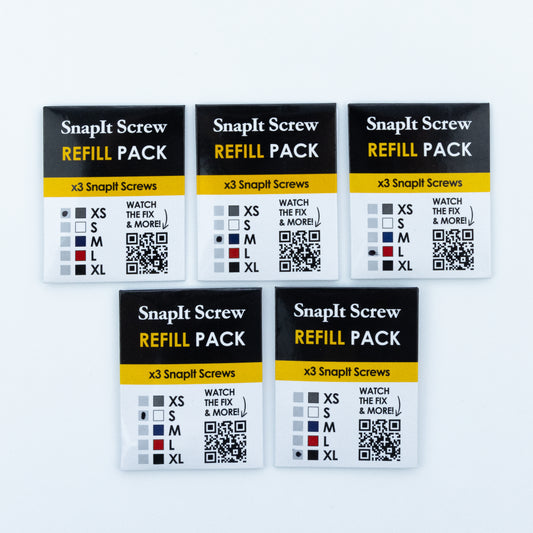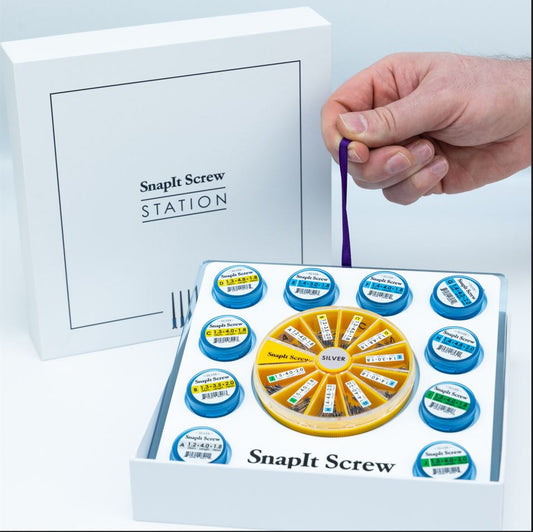Glasses are essential for clear vision and everyday comfort, so when they break or loosen, it’s natural to want a quick fix. That’s where a glasses repair kit comes in handy. These kits are designed to help you make simple repairs at home, saving time and money. However, using a repair kit without proper care or knowledge can sometimes lead to more problems.
To help you get the best results, here are some of the most common mistakes people make when using a glasses repair kit—and how to avoid them.
1. Using the Wrong Screwdriver Size
One of the most frequent errors is using a screwdriver that’s too big or too small for the tiny screws on glasses. This can strip the screw head, making it impossible to tighten or remove without special tools.
How to avoid: Always use the precision screwdriver that matches the screw size. Most eyeglass repair kits, like those from Snapit®, include multiple sizes to cover different screw types.
2. Overtightening Screws
While it’s tempting to make sure screws are as tight as possible, overtightening can damage the frame or strip the screw threads. This leads to loose screws or broken parts down the line.
How to avoid: Turn screws gently until snug, then give just a slight additional turn. If you feel resistance, stop. It’s better for screws to be slightly loose than broken.
3. Losing Tiny Screws or Parts
Glasses repair involves very small components that can easily slip out of your hands or roll away. Losing screws or nose pads mid-repair is frustrating and can delay fixing your glasses.
How to avoid: Work over a clean, flat surface. Use a small tray or container to hold screws and parts while you work. Magnetic screwdrivers can also help keep screws attached.
4. Ignoring Frame Alignment
Tightening screws or replacing parts without checking frame alignment can lead to uncomfortable glasses that don’t sit properly on your face or distort your vision.
How to avoid: After making repairs, try on your glasses and check if they sit evenly. Use an eyeglass frame aligner tool or gently adjust the arms if needed.
5. Using the Kit for Major Repairs
Eyeglass repair kits are great for small fixes like tightening screws or replacing nose pads—but they’re not designed for major repairs like cracked lenses, broken hinges, or frame replacements.
How to avoid: Know your limits. If the damage is extensive, take your glasses to a professional to avoid causing permanent damage.
6. Not Cleaning Before Repair
Dirt, oil, or debris can interfere with screws fitting properly or cause parts to wear faster.
How to avoid: Always clean the glasses with lens cleaner or alcohol wipes before starting repairs. This helps ensure parts fit well and your glasses stay in good shape.
7. Forgetting to Check Replacement Parts Compatibility
Not all replacement screws or nose pads are universal. Using the wrong size or type can cause fit issues or even damage your glasses.
How to avoid: When buying a glasses repair kit, choose one that includes a variety of replacement parts or is compatible with your glasses brand. Snapit® screws, for example, are designed for easy compatibility and secure fit.
8. Rushing the Repair
Trying to rush through repairs often leads to mistakes, such as dropping screws, misaligning parts, or breaking delicate components.
How to avoid: Take your time. Find a quiet, well-lit space, and work methodically. Patience goes a long way with small repairs.
9. Not Storing Your Kit Properly
Leaving your glasses repair kit scattered or exposed to dust and moisture can degrade tools and parts, making future repairs difficult or impossible.
How to avoid: Keep your kit in a dedicated, dry container or case. Store it in a place that’s easy to remember, so it’s ready when you need it.
10. Not Practicing Before a Real Repair
For first-timers, jumping straight into fixing your everyday glasses without practicing on an old or inexpensive pair can be intimidating and risky.
How to avoid: If possible, practice basic repairs on an old or spare pair of glasses. This builds your confidence and skill, making real repairs smoother.
Final Thoughts
Using a glasses repair kit can be a simple and effective way to keep your eyewear in top condition. But like any DIY task, success depends on the right tools, careful technique, and a little know-how.
Avoiding these common mistakes will help you get the most from your kit, extend the life of your glasses, and prevent unnecessary frustration.
If you’re looking for a reliable kit that includes everything you need—plus user-friendly tools designed for success—check out the Snapit® Eyeglass Repair Kits. They’re built with durability and ease of use in mind, perfect for DIYers of all experience levels.
 and
and  WHEN BUY 3 KITS
WHEN BUY 3 KITS






